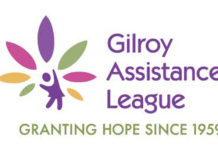Our View: The Council is on a path that would blister Gilroy’s
10-year housing growth-control limit of 3,450 units by more than 30
percent
Growth in Gilroy is out of control. A close look at the numbers reveal that our community is poised to exceed growth levels set by the City Council by more than 1,000 homes in the next seven years. That represents a blistering 30 percent increase.
Of course, all the projects are meritorious for some reason or another. But the City Council is not viewing the proverbial forest through the trees. What’s the point of setting a growth rate if the decisions made undermine the policy intent?
Take the example of the Bonfante Gardens Theme Park bailout. Mired in debt, park directors begged the City Council to issue building permits so that land the park owned could be sold to adjacent Eagle Ridge developers for a premium. Poof, a 100-plus housing permits issued.
And that’s how it goes. Projects, like former councilman Tony Sudol’s “downtown housing,” slide through the process and eventually come before Council for a verdict. Too often, the Council looks at the tree but ignores the forest. It’s much easier, of course, to go along to get along and say “yes,” especially when the project has some noble goal attached.
Consider Sudol’s proposal for the old Nob Hill/Indian Motorcycle headquarters site on 10th Street: 200 units touted as being near public transportation and downtown. Should that location really be considered downtown housing? No. Is loft housing somewhere in the neighborhood of downtown an attractive concept? Sure.
And who can blame the developers for trying to make the big dollars? They understand all too well that it’s much tougher for the Council to say “no” when a progressive policy concept is attached to their project or, in the case of Bonfante Gardens, a guilt trip.
But the Council should have the backbone to reject enough projects so that the growth control number – 3,450 units over 10 years – does not become obliterated. If the Council continues to ignore that number, a stringent, voter-passed growth-control measure like the one on the books in Morgan Hill becomes much more likely.
Every Council member during recent campaigns publicly embraced the housing growth number as a “good” number.
That makes sense because there are good reasons, fiscal and social, to set a growth number and adhere to it.
Assimilating new residents and trying to make sure they are a part of our community is one good reason. The more there are, the less likely that is to happen.
City services, especially police services, are significantly impacted by population. Keeping our officer-to-resident ratio intact is a city goal based on a level growth pattern.
Growth is out of control in Gilroy, and it’s up to the Council to reign in the permits.











